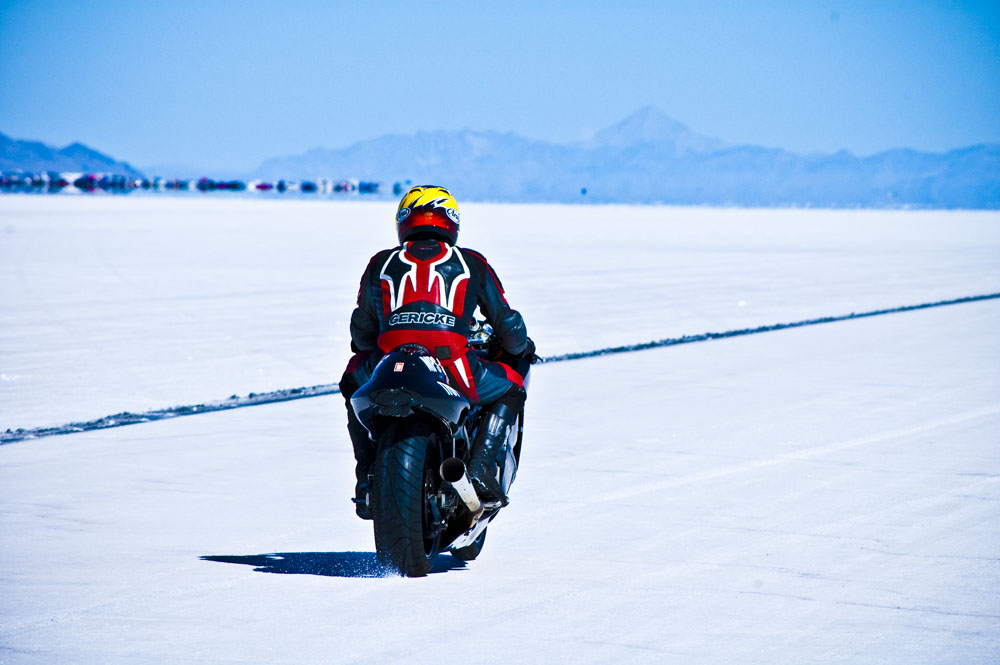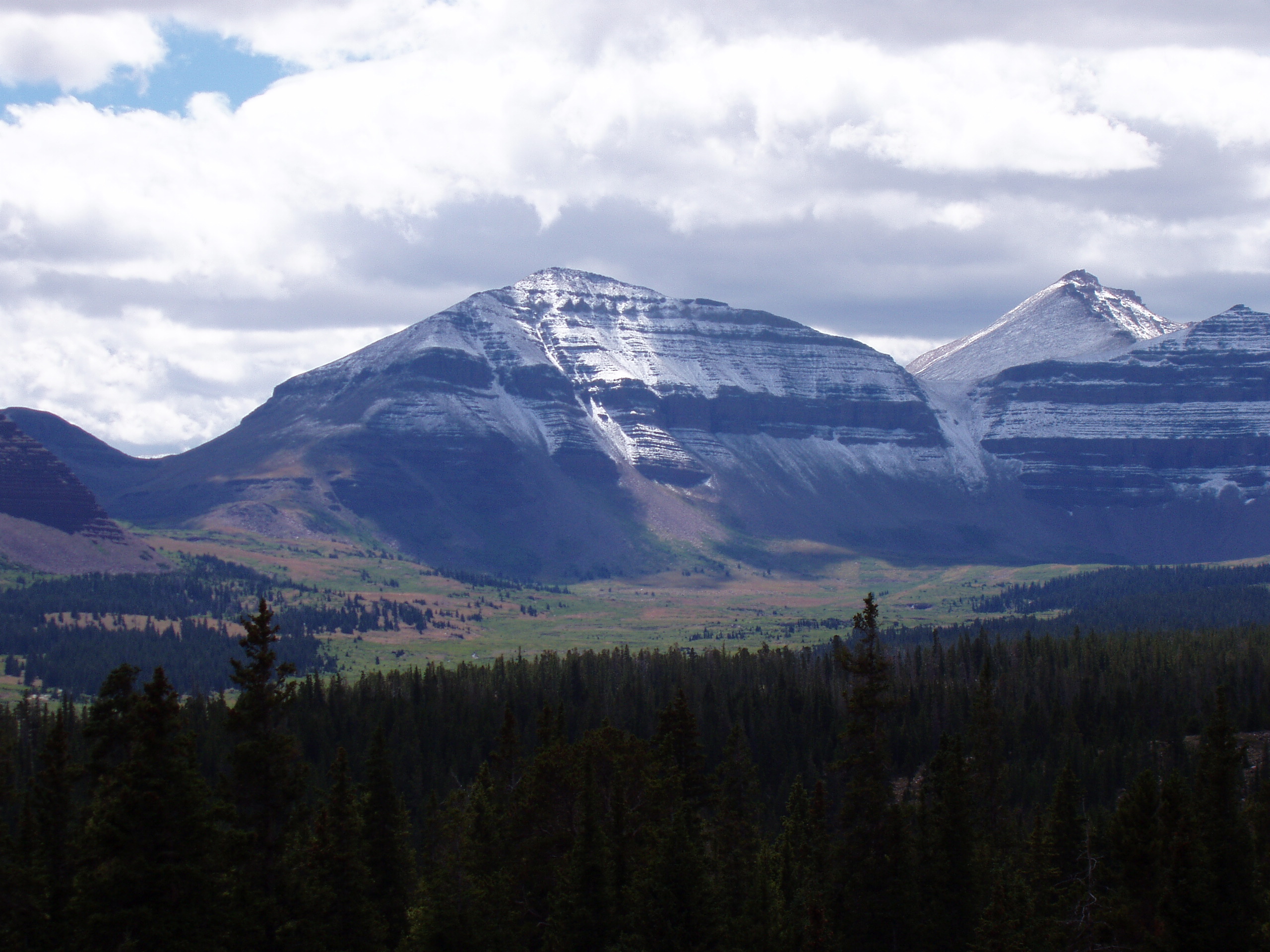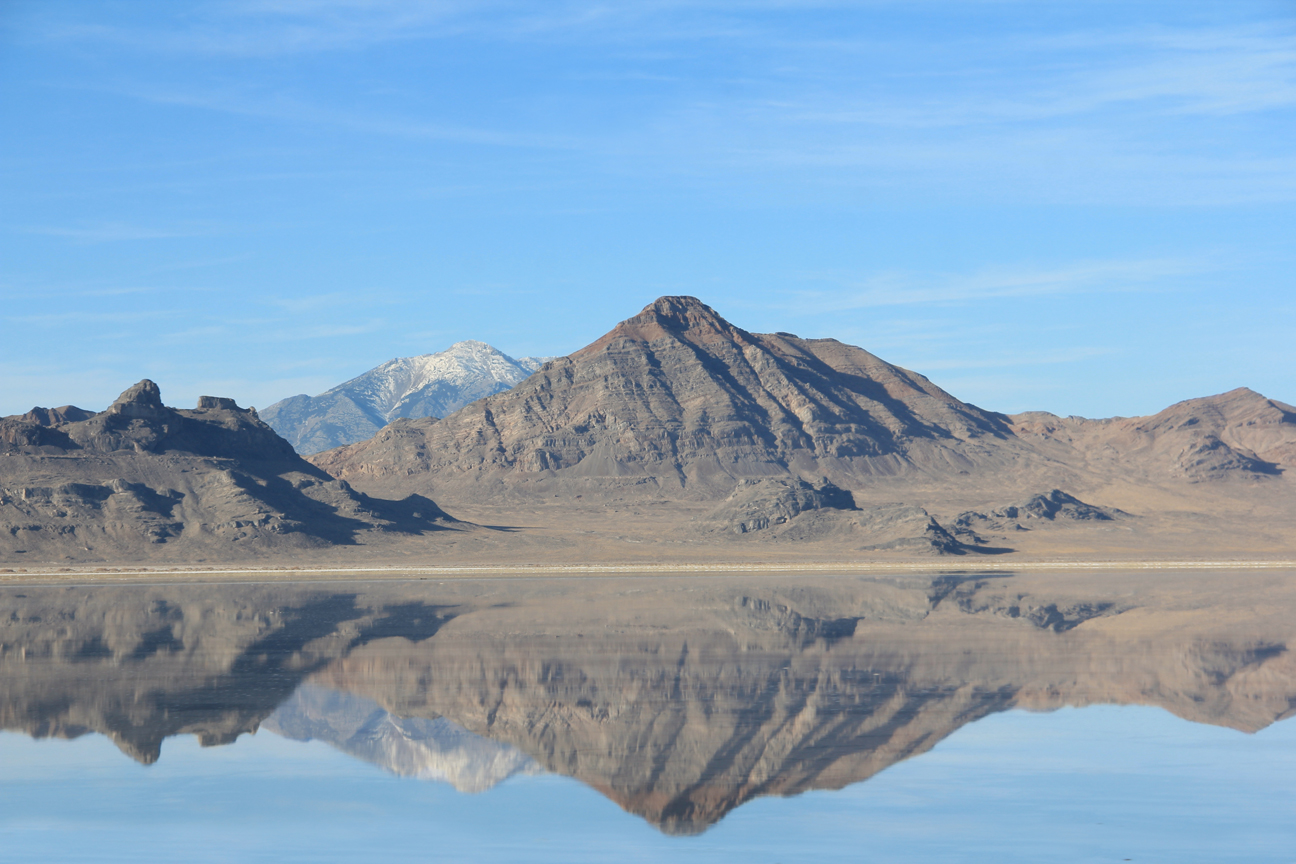|
Rishel Peak
Rishel Peak is a mountain summit located in Tooele County, Utah, United States. Description Rishel Peak is situated in the Silver Island Mountains which are a subset of the Great Basin Ranges, and it is set on land managed by the Bureau of Land Management. The community of Wendover, Utah, is eight miles to the southwest and the Bonneville Speedway is seven miles to the east-southeast. Topographic relief is significant as the summit rises above the Bonneville Salt Flats in 1.5 mile. This landform's toponym was officially adopted in 1960 by the U.S. Board on Geographic Names to honor William D. "Bill" Rishel (1869–1947), who in 1907 was the first to test the suitability of the salt flat for driving by taking a Pierce-Arrow onto its surface.Madeleine Osberger, Steve Cohen (1996), ''Adventure Guide to Utah'', Hunter Pub., , p. 47 Climate Rishel Peak is set in the Great Salt Lake Desert which has hot summers and cold winters. The desert is an example of a cold desert climate ... [...More Info...] [...Related Items...] OR: [Wikipedia] [Google] [Baidu] |
Tetzlaff Peak
Tetzlaff Peak is a mountain summit located in Tooele County, Utah, United States. Description Tetzlaff Peak is situated in the Silver Island Mountains which are a subset of the Great Basin Ranges, and it is set on land managed by the Bureau of Land Management. The community of Wendover, Utah, is 10 miles to the southwest and the Bonneville Speedway is five miles to the southeast. Topographic relief is significant as the summit rises above the Bonneville Salt Flats in one mile. This landform's toponym was officially adopted in 1960 by the U.S. Board on Geographic Names to honor American racecar driver Teddy Tetzlaff (1883–1929).Tony Huegel (2006), ''Utah Byways: 65 of Utah's Best Backcountry Drives'', Wilderness Press, , p. 26 On August 12, 1914, Tetzlaff set a land speed record by driving the Blitzen Benz at the Bonneville Salt Flats (then known as Salduro, Utah).Madeleine Osberger, Steve Cohen (1996), ''Adventure Guide to Utah'', Hunter Pub., , p. 47 Climate Tetzla ... [...More Info...] [...Related Items...] OR: [Wikipedia] [Google] [Baidu] |
Bonneville Speedway
Bonneville Speedway (also known as the Bonneville Salt Flats Race Track) is an area of the Bonneville Salt Flats northeast of Wendover, Utah, that is marked out for motor sports. It is particularly noted as the venue for numerous land speed records. The Bonneville Salt Flats Race Track is listed on the National Register of Historic Places. The salt flats were first used for motor sports in 1912, but did not become truly popular until the 1930s when Ab Jenkins and Sir Malcolm Campbell competed to set land speed records. A reduction of available racing surface and salt thickness has led to the cancellation of events at Bonneville, such as Speed Week in 2014 and 2015. Available racing surface is much reduced with just available instead of the courses traditionally used for Speed Week. Track layouts Historically, the speedway was marked out by the Utah Department of Transportation at the start of each summer. Originally, two tracks were prepared; a long straightaway for spe ... [...More Info...] [...Related Items...] OR: [Wikipedia] [Google] [Baidu] |
Mountains Of Tooele County, Utah
A mountain is an elevated portion of the Earth's crust, generally with steep sides that show significant exposed bedrock. Although definitions vary, a mountain may differ from a plateau in having a limited summit area, and is usually higher than a hill, typically rising at least 300 metres (1,000 feet) above the surrounding land. A few mountains are isolated summits, but most occur in mountain ranges. Mountains are formed through tectonic forces, erosion, or volcanism, which act on time scales of up to tens of millions of years. Once mountain building ceases, mountains are slowly leveled through the action of weathering, through slumping and other forms of mass wasting, as well as through erosion by rivers and glaciers. High elevations on mountains produce colder climates than at sea level at similar latitude. These colder climates strongly affect the ecosystems of mountains: different elevations have different plants and animals. Because of the less hospitable terrain and ... [...More Info...] [...Related Items...] OR: [Wikipedia] [Google] [Baidu] |
List Of Mountain Peaks Of Utah
This article comprises three sortable tables of major mountain peaksThis article defines a significant summit as a summit with at least of topographic prominence, and a major summit as a summit with at least of topographic prominence. All summits in this article have at least 500 meters of topographic prominence. An ultra-prominent summit is a summit with at least of topographic prominence. of the U.S. State of Utah. The summit of a mountain or hill may be measured in three principal ways: #The topographic elevation of a summit measures the height of the summit above a geodetic sea level.All elevations in this article include an elevation adjustment from the National Geodetic Vertical Datum of 1929 (NGVD 29) to the North American Vertical Datum of 1988 (NAVD 88). For further information, please see this United States National Geodetic Surveybr>noteIf the elevation or prominence of a summit is calculated as a range of values, the arithmetic mean is shown. The fir ... [...More Info...] [...Related Items...] OR: [Wikipedia] [Google] [Baidu] |
Jenkins Peak
Jenkins Peak is a mountain summit located in Tooele County, Utah, United States. Description Jenkins Peak is the third-highest summit in the Silver Island Mountains which are a subset of the Great Basin Ranges. It is set on land controlled by the Bureau of Land Management. The community of Wendover, Utah, is 17 miles to the southwest and the Bonneville Speedway is eight miles to the south. Topographic relief is significant as the summit rises over above the Bonneville Salt Flats in two miles. This landform's toponym was officially adopted in 1960 by the U.S. Board on Geographic Names to honor David Abbott "Ab" Jenkins (1883–1956), a professional race car driver who was interested in land speed records at the Bonneville Salt Flats.Madeleine Osberger, Steve Cohen (1996), ''Adventure Guide to Utah'', Hunter Pub., , p. 47United States Board on Geographic Names (1960), ''Decisions on Names in the United States, Puerto Rico and the Virgin Islands, Decision List 6001'', Depa ... [...More Info...] [...Related Items...] OR: [Wikipedia] [Google] [Baidu] |
Graham Peak (Utah)
Graham Peak is a mountain summit located in Tooele County, Utah, United States. Description Graham Peak is the highest summit in the Silver Island Mountains which are a subset of the Great Basin Ranges.John W. Van Cott (1990), ''Utah Place Names'', University of Utah Press, , p. 160 It is set on land controlled by the Bureau of Land Management. The community of Wendover, Utah, is 21 miles to the southwest and the Bonneville Speedway is ten miles to the south. Topographic relief is significant as the summit rises over above the Bonneville Salt Flats in three miles, as well as the same above the Pilot Valley Playa. This landform's toponym was officially adopted in 1960 by the U.S. Board on Geographic Names to honor Athol Graham (1924–1960), who was the first Utahan and second American to drive over 300 MPH on land.United States Board on Geographic Names (1960), ''Decisions on Names in the United States, Puerto Rico and the Virgin Islands, Decision List 6001'', Dep ... [...More Info...] [...Related Items...] OR: [Wikipedia] [Google] [Baidu] |
Volcano Peak (Utah)
Volcano Peak is a mountain summit located in Tooele County, Utah, United States. Description Volcano Peak is situated in the Silver Island Mountains which are a subset of the Great Basin Ranges, and it is set on land managed by the Bureau of Land Management. The community of Wendover, Utah, is six miles to the southwest and line parent Rishel Peak is two miles to the northeast. Topographic relief is modest as the summit rises above the Bonneville Salt Flats in 1.5 mile. This landform's toponym has been officially adopted by the U.S. Board on Geographic Names. Climate Volcano Peak is set in the Great Salt Lake Desert which has hot summers and cold winters. The desert is an example of a cold desert climate as the desert's elevation makes temperatures cooler than lower elevation deserts. Due to the high elevation and aridity, temperatures drop sharply after sunset. Summer nights are comfortably cool. Winter highs are generally above freezing, and winter nights are bitterly ... [...More Info...] [...Related Items...] OR: [Wikipedia] [Google] [Baidu] |
Diurnal Temperature Variation
In meteorology, diurnal temperature variation is the variation between a high air temperature and a low temperature that occurs during the same day. Temperature lag Temperature lag is an important factor in diurnal temperature variation: peak daily temperature generally occurs ''after'' noon, as air keeps net absorbing heat even after noon, and similarly minimum daily temperature generally occurs substantially after midnight, indeed occurring during early morning in the hour around dawn, since heat is lost all night long. The analogous annual phenomenon is seasonal lag. As solar energy strikes the Earth's surface each morning, a shallow layer of air directly above the ground is heated by conduction. Heat exchange between this shallow layer of warm air and the cooler air above is very inefficient. On a warm summer's day, for example, air temperatures may vary by from just above the ground to waist height. Incoming solar radiation exceeds outgoing heat energy for many hours af ... [...More Info...] [...Related Items...] OR: [Wikipedia] [Google] [Baidu] |
Desert Climate
The desert climate or arid climate (in the Köppen climate classification ''BWh'' and ''BWk''), is a dry climate sub-type in which there is a severe excess of evaporation over precipitation. The typically bald, rocky, or sandy surfaces in desert climates are dry and hold little moisture, quickly evaporating the already little rainfall they receive. Covering 14.2% of earth's land area, hot deserts are the second most common type of climate on earth after the polar climate. There are two variations of a desert climate according to the Köppen climate classification: a hot desert climate (''BWh''), and a cold desert climate (''BWk''). To delineate "hot desert climates" from "cold desert climates", there are three widely used Isotherm (contour line), isotherms: most commonly a mean annual temperature of , or sometimes the coldest month's mean temperature of , so that a location with a ''BW'' type climate with the appropriate temperature above whichever isotherm is being used is classi ... [...More Info...] [...Related Items...] OR: [Wikipedia] [Google] [Baidu] |
Pierce-Arrow
The Pierce-Arrow Motor Car Company was an American motor vehicle manufacturer based in Buffalo, New York, which was active from 1901 to 1938. Although best known for its expensive luxury cars, Pierce-Arrow also manufactured commercial trucks, fire trucks, boats, camp trailers, motorcycles, and bicycles. The beginning of the company The forerunner of Pierce-Arrow was established in 1865 as Heinz, Pierce and Munschauer. The company was best known for its household items, especially its delicate, gilded birdcages. In 1872, George Norman Pierce (1846–1910) bought out the other two principals of the company, changed the name to the George N. Pierce Company, and in 1896 added bicycles to the product line. The company failed in its attempt to build a steam-powered car in 1900 under license from Overman, but by 1901, had built its first single-cylinder, two-speed, no-reverse ''Motorette''. Motorette image In 1903, it produced a two-cylinder car, the ''Arrow''. In 1904, Pierce d ... [...More Info...] [...Related Items...] OR: [Wikipedia] [Google] [Baidu] |
Bonneville Salt Flats
The Bonneville Salt Flats are a densely packed salt pan in Tooele County in northwestern Utah. A remnant of the Pleistocene Lake Bonneville, it is the largest of many salt flats west of the Great Salt Lake. It is public land managed by the Bureau of Land Management and is known for land speed records at the Bonneville Speedway. Access to the Flats is open to the public. The Flats are about 12 miles (19 km) long and 5 miles (8 km) wide, with a crust almost 5 ft (1.5m) thick at the center and less than one inch (2.5 cm) towards the edges. It is estimated to hold 147 million tons of salt, approximately 90% of which is common table salt. History Geologist Grove Karl Gilbert named the area after Benjamin Bonneville, a U.S. Army officer who explored the Intermountain West in the 1830s. In 1907, Bill Rishel and two local businessmen tested the suitability of the salt for driving by taking a Pierce-Arrow onto its surface. A railway line across the Flats was completed in ... [...More Info...] [...Related Items...] OR: [Wikipedia] [Google] [Baidu] |





